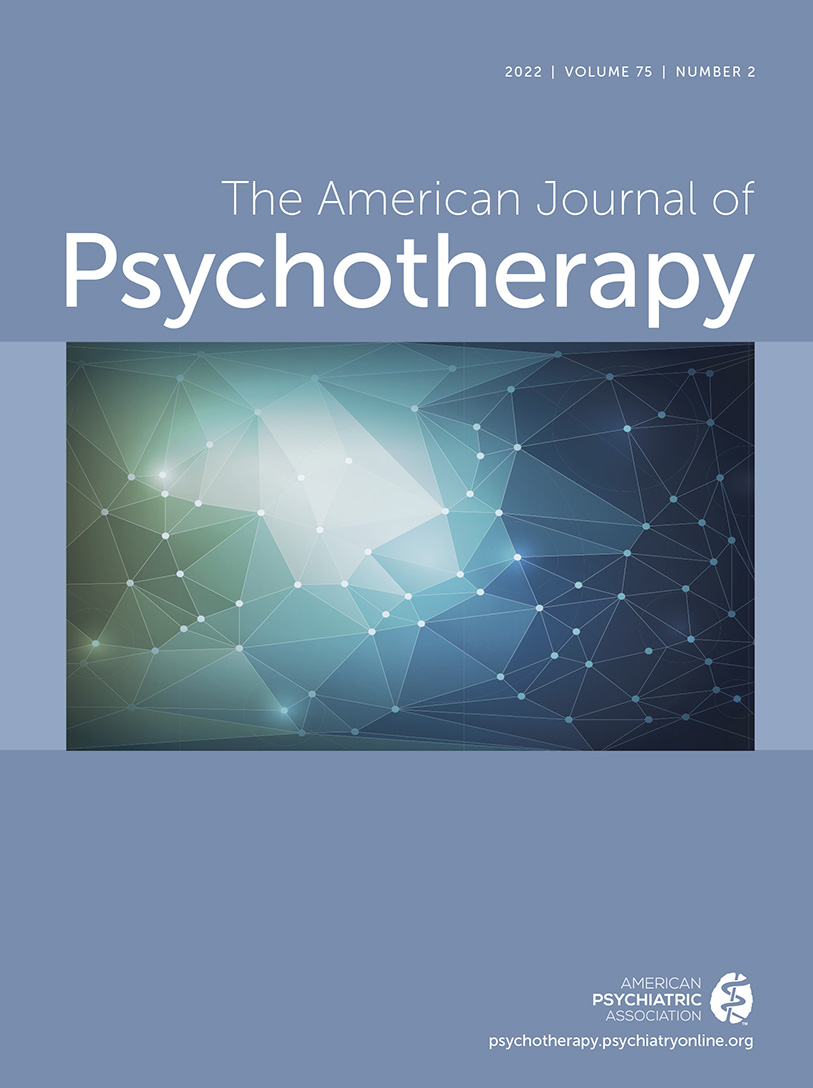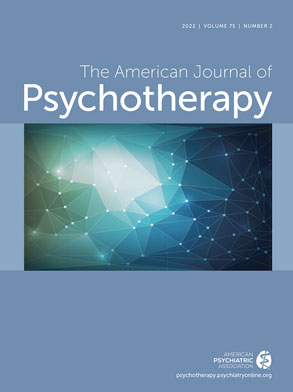The
American Journal of Psychotherapy was founded at a particularly interesting time. It began publication in 1947 in the aftermath of World War II. Many physicians, including such future luminaries as William Menninger, Roy Grinker, and Herbert Spiegel, returned to their civilian lives with an appreciation for the psychological effects of the trauma of war. At the time, the treatment for so-called “combat fatigue” or “war neurosis” involved barbiturates to promote mental catharsis and recall of the suppressed traumas (
1). It was in this postwar context, especially the expansion of the Veterans Administration and the founding of the National Institute of Mental Health in 1949, that the explosive growth of the psychiatry and psychology workforce occurred. Psychotherapy was seen as a critical tool to advance the treatment of people with mental illness.
As articulated by Emil Gutheil in the introduction to the first issue, the journal was not intended to be “partisan” but rather would attempt to achieve a mutual understanding across diverse schools of thought (
2). It was dedicated to the clinical practice of psychotherapy, without allegiance to any particular approach or professional discipline. The goal was to improve psychotherapy training to meet the burgeoning demand for therapeutic services. He had the grand aspiration to “forge the spiritual weapons for a better future in a united world.” Throughout its 75-year history, the journal has remained true to these aims, publishing articles with a wholly clinical focus from many eclectic and integrative points of view for a heterogeneous general readership. In addition to clinical articles on a range of topics, the journal has consistently published case reports, interviews with master therapists, and book reviews.
The journal has witnessed the evolution and growth of the fields of psychiatry and psychology, including many paradigm shifts and changes in diagnostic schemas. The introduction of chlorpromazine ushered in the psychopharmacologic era in 1952. While there were many who expected biological psychiatry to make psychotherapy redundant or less important in the care of patients, any perusal of the journal’s archives—not merely its many seminal articles—reflects the continuing vitality of psychotherapy and its practitioners’ engagement with the changing cultural mores of past decades.
The very first volume illustrates the origins of psychotherapy, with articles about hypnotherapy as well as a multipart autobiography by William Stekel about his analysis with Sigmund Freud (
3). Early issues have articles about using psychotherapy with Holocaust survivors, anticipating articles published decades later about using psychotherapy with children of Holocaust survivors. There were debates about “lay versus medical” psychotherapy and the psychotherapeutic treatment of hypertension, which was considered a psychosomatic condition. The journal published articles on important political issues of the day, including a paper on the psychological effects of school segregation in the years prior to the
Brown v Board of Education case (
4), another on the psychology of “political extremism” in 1968 (
5), and another on “what makes a hippie” (
6). There were important papers by leaders in the field: Fritz Perls on “personality integration” (
7), Paul Federn on the “psychotic ego” (
8), Silvano Arieti on psychotherapy among people with schizophrenia (
9), Victor Frankl on existential psychotherapy (
10), Albert Ellis on therapy for psychosis (
11), Eric Berne on transactional analysis (
12), Carl Whitaker on couples therapy (
13), Carl Rogers on process (
14), Nathan Ackerman on family therapy (
15), Jay Haley on communication (
16), Jerome Frank on nonspecific factors in therapy (
17), Rush and Beck on cognitive therapy (
18), Isaac Marks on behavioral treatment of phobias (
19), Daniel Goleman on meditation (
20), Peter Sifneos on short-term dynamic therapy (
21), T. Byram Karasu on spiritual psychotherapy (
22), and Nicholas Cummings on the future of therapy in the managed care era (
23). The journal was sufficiently eclectic and welcoming of intellectual debate that it published a controversial paper by Thomas Szasz on “the myth of psychotherapy” (
24).
Throughout the “decade(s) of the brain” and the dominance of psychopharmacology, the journal stayed true to its mission of advocating for psychotherapeutic approaches. There were papers on “the meanings of medication.” In the category of “all things old are new again,” the journal published a paper in the 1960s on the use of LSD in psychotherapy and in December 2021 a systematic review of the components of psilocybin-assisted psychotherapy. There was even an early paper on the impact of LSD on the therapist. The journal clearly reflected, and still reflects, the diagnostic mores and prejudices of these different eras. In the 1950s, papers on the “problem” of homosexuality and transsexualism appeared in the journal, but by the 1970s these were no longer considered pathologies, and the journal published many papers on polymorphous sexual topics. Since the 1970s, there have been many articles on borderline personality disorder, a diagnostic category that did not exist in prior decades.
The journal has covered all areas of therapy, including group therapy, therapy with children and adolescents, supportive psychotherapy, and therapy with schizophrenia. Under our editorship, beginning in 2012, we devoted entire issues to interpersonal psychotherapy, psychotherapy for psychosis, psychotherapy supervision, and dialectical behavior therapy. As a journal for clinical practitioners, it has published articles on ethics, legal issues, and malpractice. At the same time, the journal has tackled such lofty topics as love and religion. We have no doubt that the journal will publish articles on the psychological impact of the current COVID-19 pandemic on patients and therapists, as well as the effect of telepsychiatry. There may well be articles on psychotherapy in the metaverse.
Throughout the journal’s decades, it has retained its clinical focus and its eclecticism. Our decision to transfer the journal to the American Psychiatric Association (APA) in 2016 was to ensure its survival, taking advantage of the specialty-oriented publisher’s robust marketing and distribution capabilities. We believed as well that a journal devoted to psychotherapy and practicing clinicians would fill a need for APA members and allied mental health professionals. We are confident that Editor Holly A. Swartz, M.D., will uphold the journal as a “big tent” for all readers, ensuring that it remains nonpartisan and shows humility toward different perspectives and therapeutic beliefs. If anything can be gleaned by reviewing the journal’s history, it is that today’s clinical approaches and diagnostic mores will seem quaint to readers decades from now. We are as tied to our cultural and historical era as our predecessors were to theirs. We should be circumspect about making predictions about future trends in psychotherapy, but Gutheil’s idea that psychotherapy can help to forge “spiritual weapons in a united world” (
2) is a worthy aspiration. It’s a reminder of the enduring importance and role of psychotherapy, and of what we therapists do.

